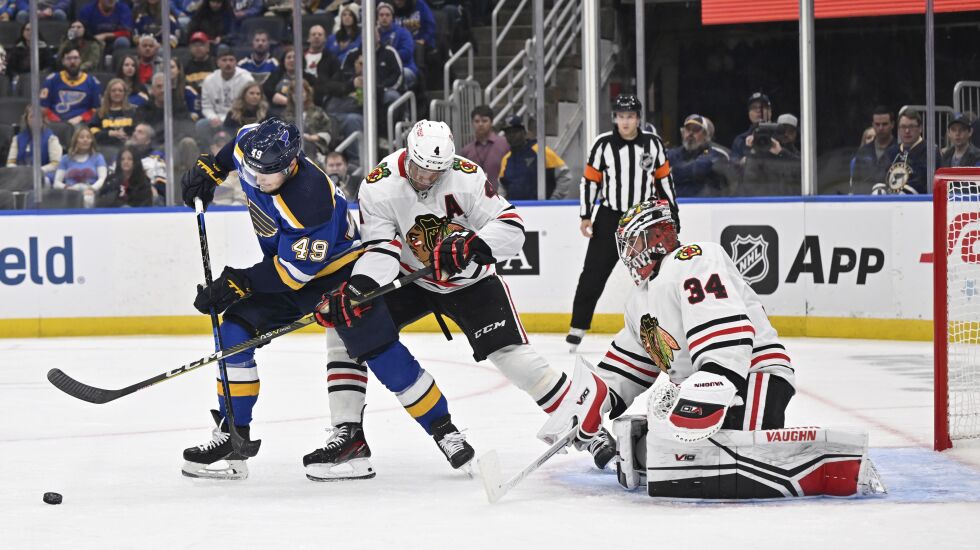
In terms of actual goaltending, Petr Mrazek and Alex Stalock enter 2022-23 as one of the NHL’s shakier duos. Both struggled in different ways last season, although both could be bounce-back candidates this season.
In terms of playing the puck, though, Mrazek and Stalock are two of the league’s more competent goalies. Both demonstrated during training camp an eagerness and ability to leave the crease and make smart, safe passes.
“We’ll put in a little bit of work in before practices, doing stuff, but Petr and I have just done it for a while,” Stalock said. “There are goalies that are really comfortable with going out; there are some that prefer not to go out. It’s just [based on] your ability.”
Stalock is particularly active. Mrazek is more cautious, but he still does it somewhat frequently.
“I like to play the puck [but] just be careful,” Mrazek said. “I don’t think I’m the guy who plays the puck way too much. No crazy, crazy plays. I try to keep it simple and play it fast. You never know—mistakes can happen—but I try to keep it simple.”
There’s always an inherent risk with active puck-playing goalies. If they make an errant pass, if a teammate fumbles an otherwise fine pass, if they get caught behind the net without help or if the puck takes an odd deflection on a rim-around, disaster can occur.
They’re also hardly a game-changing aspect of the sport. Considering how poor the rebuilding Hawks’ roster is and how ugly their preseason results were, an unsuccessful season seems inevitable.
In most cases, however, it is an advantage—if only a minor one—to functionally have a sixth man capable of handling the puck. Hawks returning from last season already have some experience with that from playing with Marc-Andre Fleury, who had the same tendency. Fleury’s 20 career assists actually lead all active goalies.
The ripple effects start well before the puck enters the defensive zone. Knowing an active puck-playing goalie is behind them, the Blackhawks can more aggressively pressure the opponent’s puck-carrier outside the blue line. That, in turn, makes it more difficult for the puck-carrier to enter the zone with possession and more likely to instead dump it in.
Then, when they do, the goalie’s ability to leave his crease, stop the puck bouncing off the end-wall (or circling around the boards) and pass it to a tracking-back defenseman gives opposing forechecks less time and opportunity to tie things up.
“It forces teams to make a decision at the red line,” Stalock said. “This league has gotten so good with the skill guys going east-west when they come in the zone, you don’t want a team to have possession when they enter the zone. If...you make them make a decision, it makes it a lot harder. They can’t set up a forecheck, and they can’t get rush tries and three-on-two [breaks] and stuff like that.”
Swiftly turn a dump-in into a breakout enough times successfully, and opponents may change to a two-man forecheck designed to take away the goalie’s passing lanes to his two defensemen. New Hawks coach Luke Richardson saw that happen often with the Canadiens during Carey Price’s long tenure.
But if Hawks forwards circle back deep enough to help with the breakout, as Richardson has instructed them to do during camp, they’ll provide additional passing outlets for Mrazek and Stalock. And if the goalies can feed the forwards directly, bypassing the defensemen altogether, that can jumpstart a transition attack in the other way even faster.
“It can help relieve some pressure in our ‘D’-zone,” Richardson said. “So that’ll definitely be part of our game plan.”







